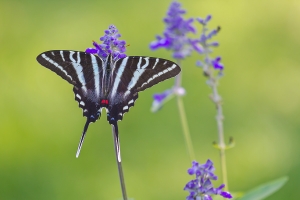John. Thanks for the notes. The only thing I have say is that the CV-125 (Cosina/Voigtlander 125mm APO) lens is perfect for outdoor and for my work outdoors. It is fast, 1:1, very sharp, well-corrected, and so on. It is a manual-focus lens, but unless I am shooting flying insects, or whatever, I never use auto-focus.
I almost never auto-focus either. I also use a tripod and almost never hand-hold.
However, there are times where I have no choice but to do both.
When doing so (hand-holding without a tripod), I prefer to have the availability of these key features (IS/AF), if needed, than to miss a shot because I don't have these features at all.
I have used the CV-125 for many years outdoors with great results. So it would be helpful, when you make a statement like: "I really enjoyed your article on the Voigtlander, but felt it was better-suited to studio-type work," if you actually had used the CV-125 lens outdoors, in which case you would probably not make that statement, unless (of course) you have this fixed set of parameters for what you consider a macro lens, in which case I would urge you to point it out. If the Zeiss Otus-style lenses were not available, my opinion is that the CV-125 is by far the best all-purpose macro lens on the planet... at least that I have seen, and I have seen a bunch.
I make the statement because I have simply failed to get shots (trying to MF) that I was able to get using AF. (Typically, these are butterflies on "high alert" ... flitting from flower-to-flower. They land, they sip, they fly off. In cases like this, I have little time to precision focus. I try my best to compose the shot, hit AF, fire. If I tried also to really zero-in on the focus, the butterfly will be gone before I get there.)
If it is a lazy butterfly, and just sits there with its wings open, then I can take my time, use Live View, etc. However, many species simply will not allow you that kind of time. Therefore, if I am hiking and see such a creature, I like the ability to switch to AF/IS, than to "wish I had it" for that situation ...
But just like you stipulate (if you do) the need for auto-focus, so I stipulate (to myself) that I need a very well-corrected lens for my work. As I have mentioned in previous posts that the wonderful Zeiss Makro-Planar macro lenses (100mm, 500mm) are quite sharp, but not well corrected, so i can't use them. But for many, many people they are the cat's meow, as they say.
I mention a similar passage in my article (wonderful, but no 1:1, no AF, no MF) ...
I am willing to forgo a bit of resolution, etc. (albeit not too much) ... and have a much wider list of options ... than to have an edge in some categories (but lose other options altogether).
Versatility is what I am after, without losing any appreciable trait at all.
Here is one of hundreds of thousands of outdoor shots I have made with the CV-125.
Very nice!
Here is a shot I got of a Zebra Swallowtail in Florida ... thanks to having AF (albeit slower than the Sigma) on the old Canon 180mm.
It was still fast enough to let me get this (and a couple other) shots, before it flew off altogether.
While the Voigtlander I am sure is a vastly-superior piece of glass to the Canon 180, had I been forced to crank on a 680° manual-focus ring to get the shot, I doubt I could have got a shot at all.

Jack